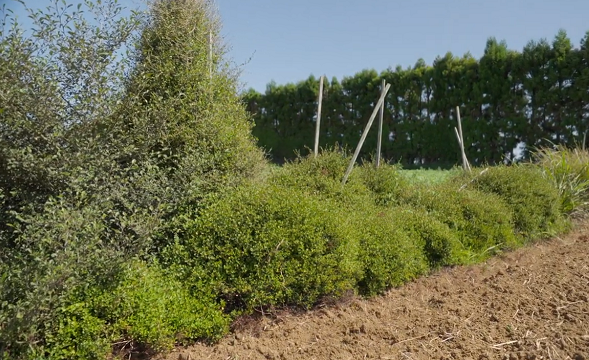Native perennial plantings alongside vegetable crops at the Pukekohe Research and Demonstration Farm are hosting significant diversity of beneficial insects, spiders and mites over winter.
What this means is the native plants are delivering on their purpose of providing food and habitat through winter to support key beneficial populations which in turn contribute to pest suppression in the vegetable growing system.
The findings stem from monitoring carried out by Plant & Food Research at the demonstration farm last winter as part of the A Lighter Touch, Vegetables New Zealand and Onions New Zealand biodiversity project. The project aims to demonstrate increasing plant biodiversity on vegetable farms can result in more beneficial species, fewer pests in crops, and less pesticides required.
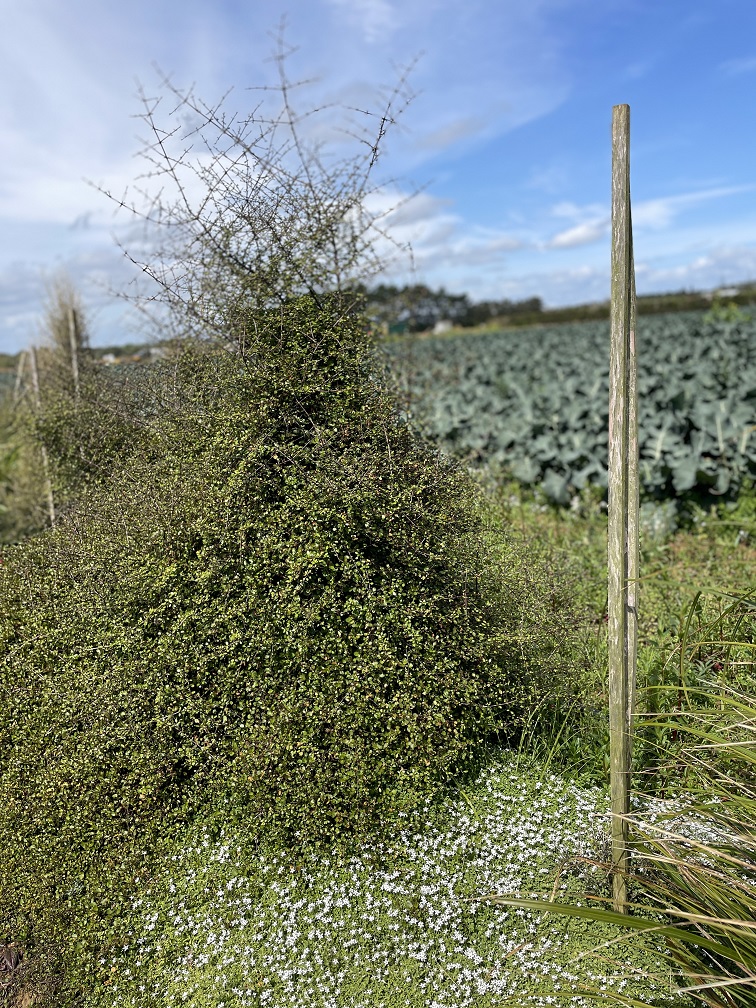
Native perennial plantings alongside vegetable crops at the Pukekohe Research and Demonstration Farm. Credit: Olivia Prouse.
PFR entomologist Asha Chhagan, who led the monitoring research, found the native plant species in the non-cropping areas of the farm supported a variety of invertebrates, including beneficial species (natural enemies and pollinators), general invertebrates and potential pests.
General invertebrates were the most common group observed.
Among the beneficial invertebrates found were spiders, predatory mites, ladybirds, hoverflies, predatory bugs, other predators (beetles, lacewings), and parasitoids. Spiders were the most abundant natural enemy group observed.
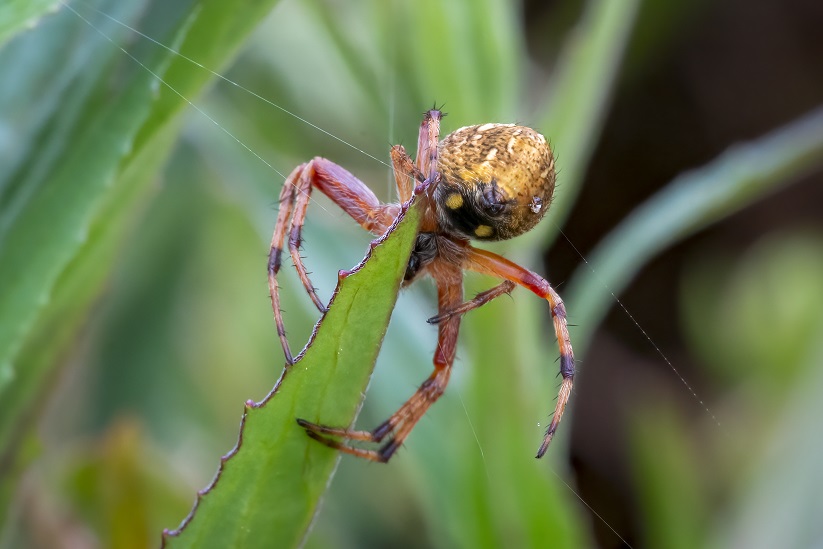
Spiders were the most abundant natural enemy group observed in the native plantings.
A total of 3739 individual invertebrates were collected and categorised from the samples obtained through fortnightly sweep netting as part of the monitoring.
It found most of the collected invertebrates were “general” invertebrates (69%), followed by pests (20.8%), natural enemies (6.5%), and pollinators (3.7%).
In her report, Asha says although a high percentage of invertebrates were classified as “general” species or potential “pests,” it should be highlighted that this invertebrate biodiversity with multiple trophic levels and networks is essential for maintaining a healthy ecosystem.
“The “general” invertebrates found may play a role in ecosystem functioning, such as decomposition, nutrient cycling, and soil formation, which support soil health. The invertebrates are also an important part of food webs, providing food for other invertebrates and vertebrate species. They may also feed on micro-organisms such as fungi.
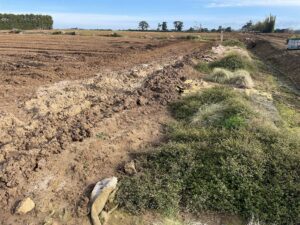
Low-growing natives planted alongside the drain at the farm.
“The small number of natural enemies observed was somewhat anticipated, given that monitoring occurred over winter and spring, and invertebrate activity typically declines in cooler weather.
“Nevertheless, the diverse range of beneficial invertebrates associated with the native perennial plantings was noteworthy. Beneficial invertebrates found in association with the native plantings from June to October included spiders, predatory mites, ladybirds, hoverflies, predatory bugs, other predators (beetles, lacewings), and parasitoids, all of which are likely to contribute to some level of pest suppression in a vegetable growing system.”
Muehlenbekia axillaris was the most abundant flowering native perennial plant on the demonstration farm from June to October and showed the highest diversity of invertebrates (including natural enemies) among the flowering native plant species present.
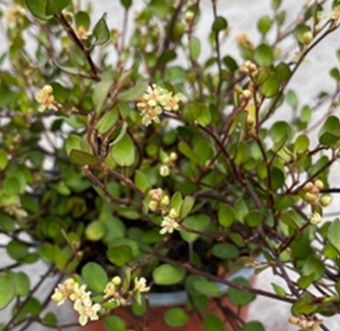
Muehlenbekia axillaris.
This plant, commonly known as creeping wire vine or creeping Pōhuehue, is a low-growing shrub that creates a mass of intertwined wiry stems carrying minute leaves. The small cream-coloured flowers were present in large numbers in winter, with numbers gradually decreasing into spring. The plant species may provide shelter, nectar, alternative food and pollen (SNAP) for beneficial insects.
While Muehlenbekia axillaris was the most abundant flowering native perennial found with the highest diversity of beneficial invertebrates among the flowering native plant species present, other plants such as Ozothamnus leptophyllus, Pratia puberula ‘Alba,’ Pomaderris kumeraho, Lobelia angulata, Pimelea prostrata ‘Blue Peter,’ Metrosideros carminea ‘Red Carpet’ and Olearia cheesmanii all appeared to support low levels of beneficial invertebrate populations from winter to spring.
Asha says international studies have highlighted the importance of native plantings within agroecosystems.
This summer further biodiversity research has been undertaken involving insect monitoring of the moveable pods or insectaries, which are one of the components of the biodiversity project. Funded by the Te Ahikawariki Vegetable Industry Centre of Excellence (VICE), the results from this work will help inform next steps in the biodiversity project.
